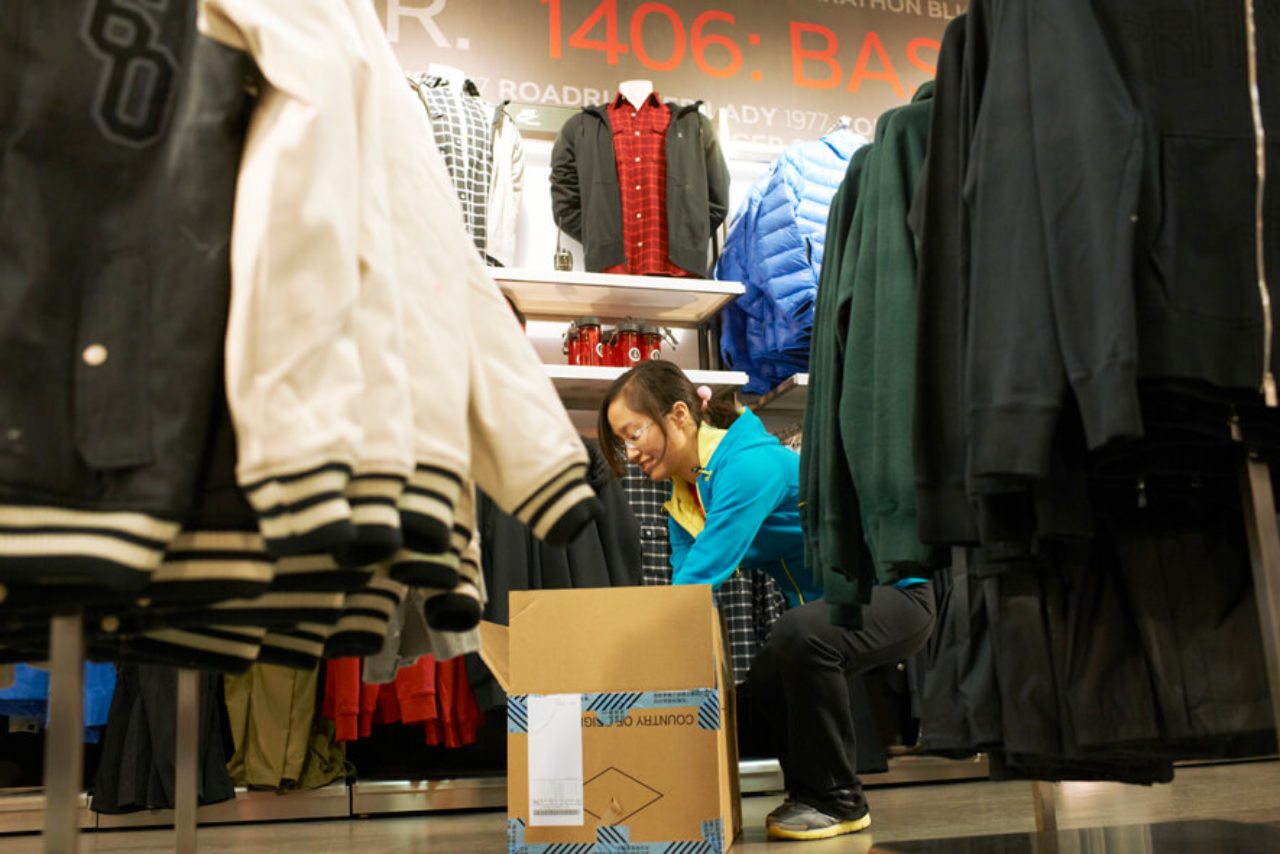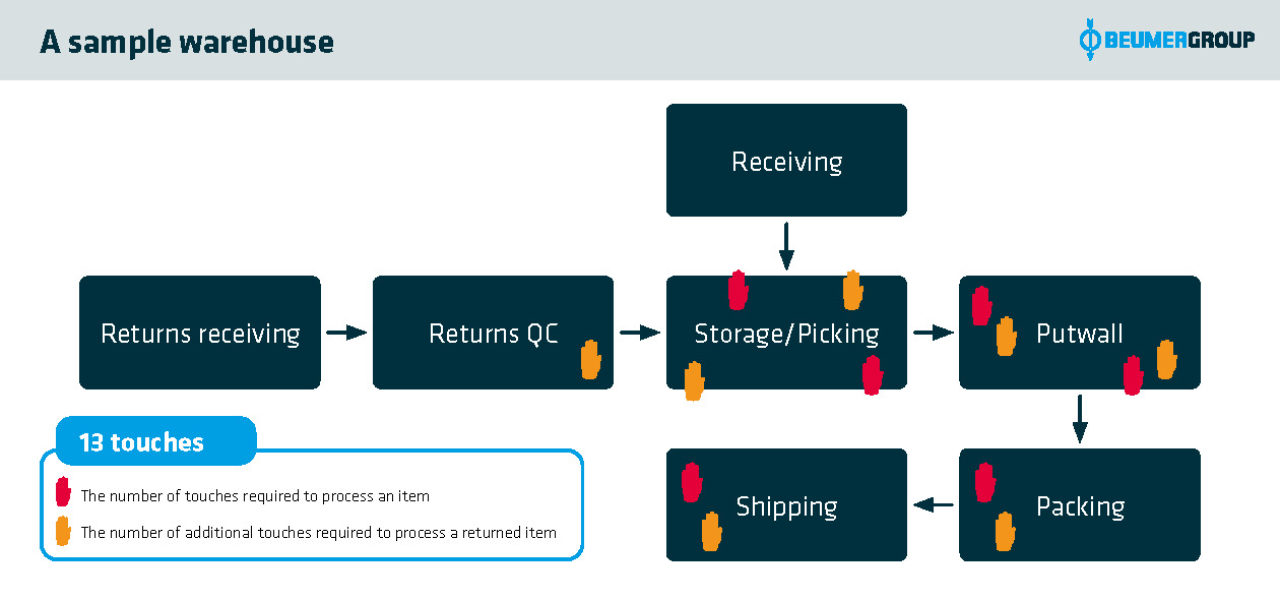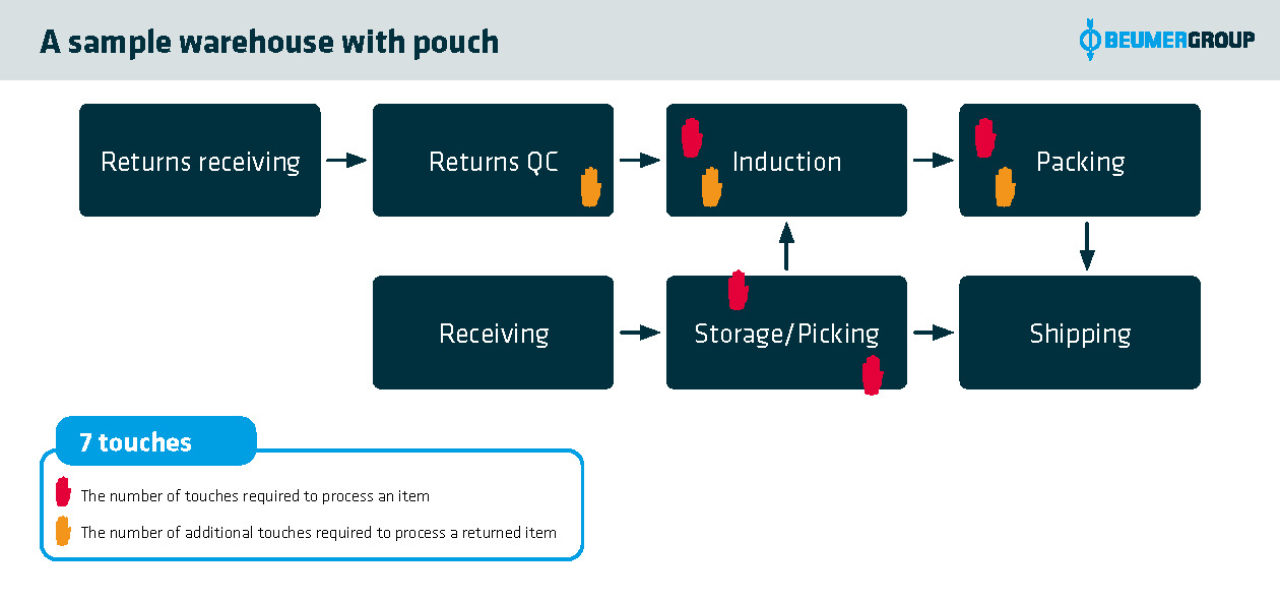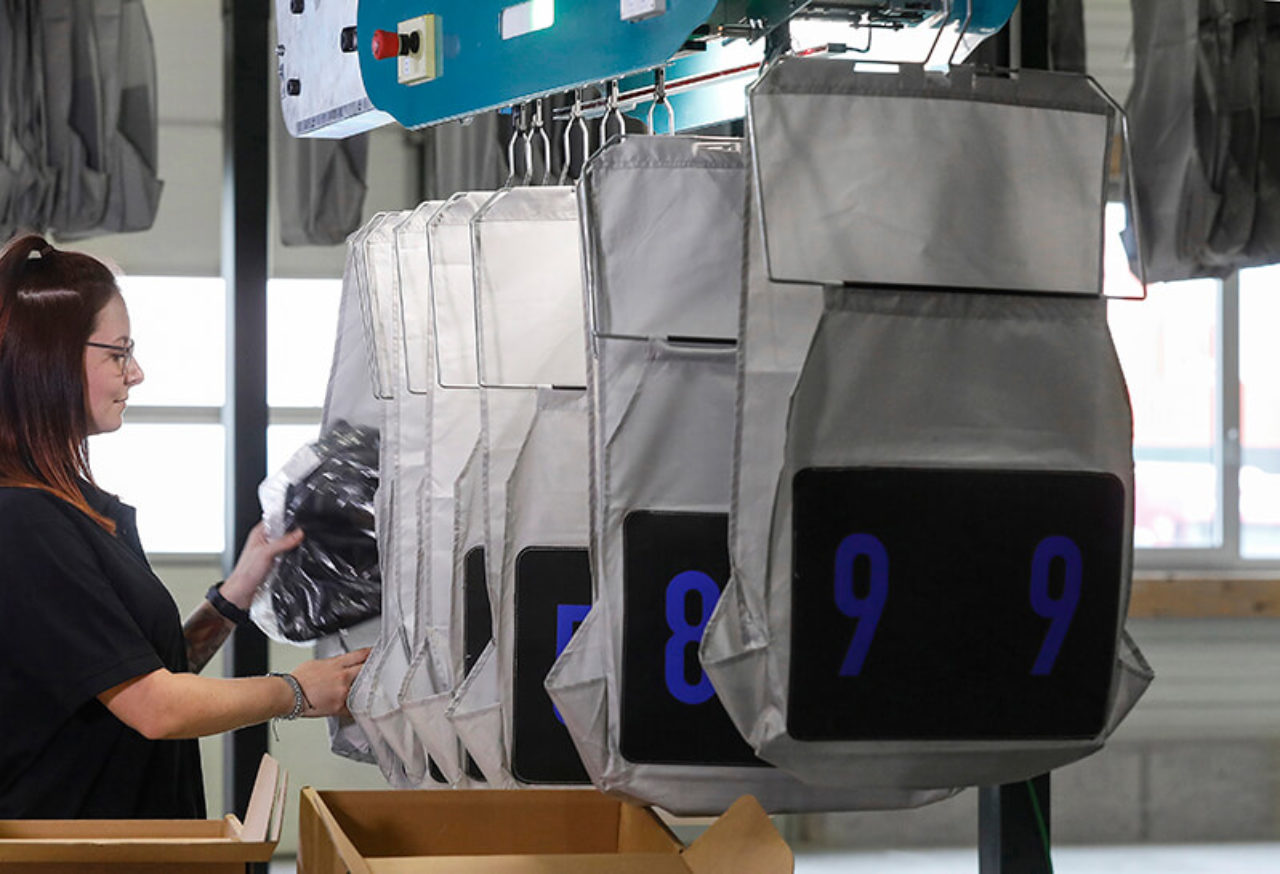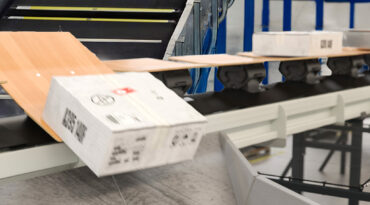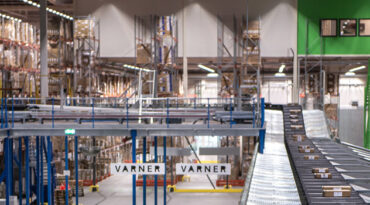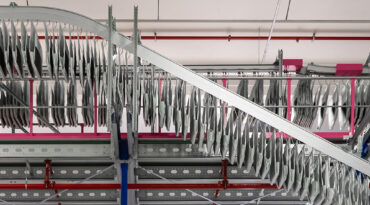An illustration of how items and returns are handled at a warehouse without pouch sorter technology.
A total of 13 touches are required to process a returned item.
But what if the logistics centre could remove many of the touches to not only reduce the labour required but also the time in which the returns could be made available again?
How pouch sorter systems can minimise the touches needed in the returns process
That’s where the pouch (or pocket) sorter system comes into play. This specialised e-commerce fulfilment technology is able to transport, sort, sequence and store both outbound and returned items. As such, it can simplify and streamline a number of steps in e-commerce fulfilment in general.
The pouch technology eases the handling of returns by placing each item directly into a pouch rather than sending it back to the shelf or regular storage where it has to be picked again if it is ordered. The pouch system serves as an intermediate buffer for return items which are typically re-sold within three days. Returns needed to fulfil an order are automatically retrieved from the dynamic buffer and sent to sortation. Only those items which are not sold after a few days are returned to shelf storage – or shipped for recycling – as part of an automatic, easy housekeeping process which is run during low-throughput periods. And even these non-sold items can be sorted to any sortation criteria needed. For example, all pieces of a non-sold SKU can be brought together to a packing station where they can be put in a tote or carton and sent back to storage as a single SKU tote or carton.
In this way, the pouch system dramatically reduces the cost of handling returns; the fewer times an item is touched – and the shorter and cleaner the process – the more value the item retains.















